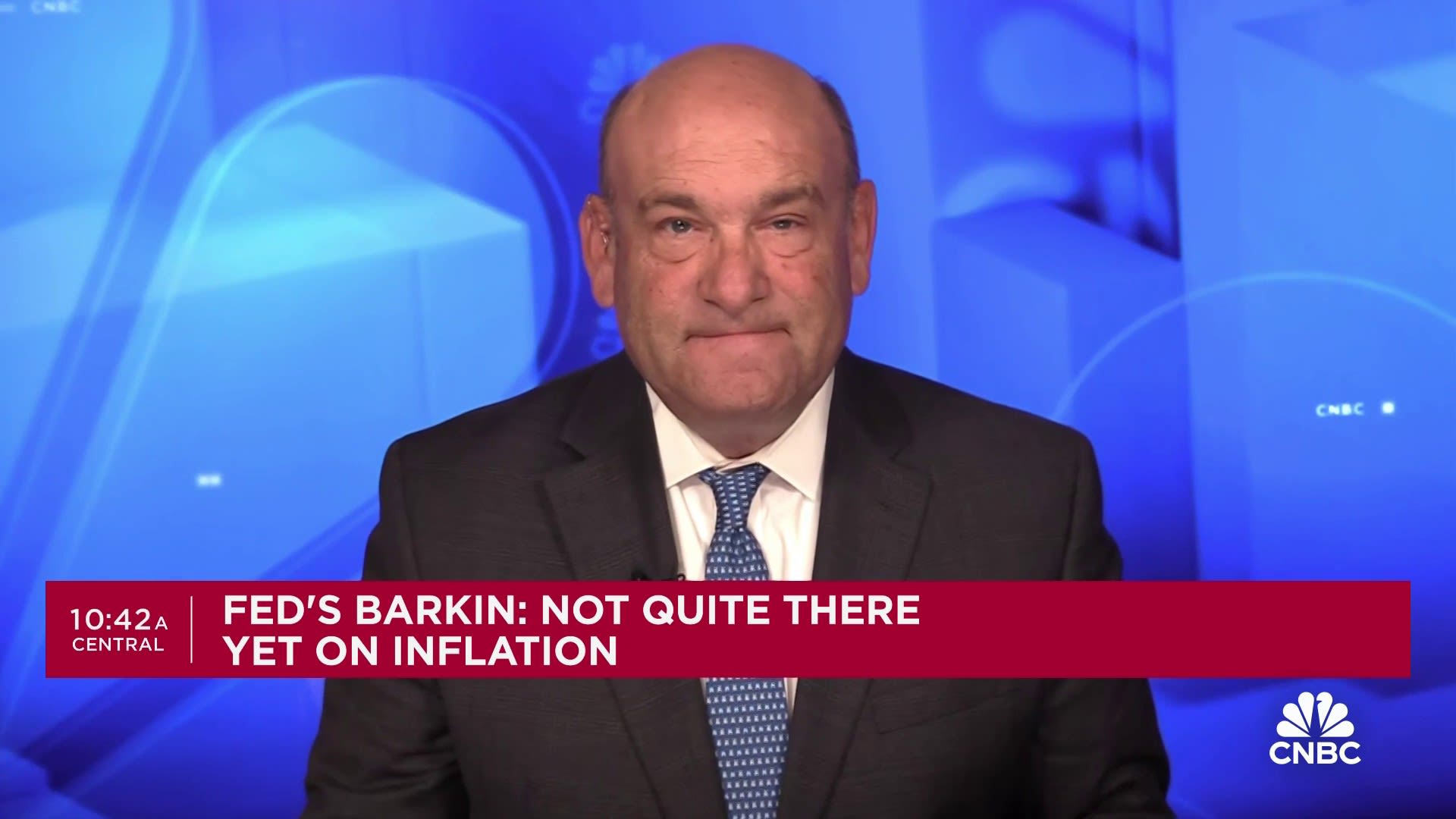People walk past the headquarters of the People’s Bank of China (PBOC), the central bank, in Beijing, China September 28, 2018.
Jason Lee | Reuters
BEIJING — Ratings agency Fitch no longer expects China to cut its policy rate this year, and has pushed back its expectations for a reduction to next year as the U.S. Federal Reserve keeps its interest rates high.
Fitch now forecasts China will keep its one-year medium-term lending facility (MLF) unchanged this year at 2.5%, and cut it to 2.25% next year. In March, the ratings agency had forecast one cut for 2024.
“There are a couple of factors behind this. First on the external side, concerns around the exchange rate against the U.S. dollar, because of changing expectations for the Fed, restrain the [People’s Bank of China],” Jeremy Zook, Fitch Ratings’ head of sovereign rating in Asia Pacific, said during a presentation Wednesday.
Next year, “as the Fed begins to cut policy rates we think that should give a bit more space for the PBOC to maneuver,” he said. Zook expects Beijing to make greater use of fiscal policy this year.
The Fed last week held steady on its key interest rate and indicated just one cut by the end of the year. That contrasts with investor expectations heading into 2024 that the Fed would soon ease monetary policy after aggressively hiking rates.

Tighter Fed policy has kept the U.S. dollar strong against the Chinese yuan, which is close to re-touching lows last seen in 2008, according to Wind Information data. A weaker Chinese currency increases the pressure of capital outflows.
“Also there do seem to be concerns around bank net interest margins being quite low, and this also poses challenges for the PBOC,” Zook said. Net interest margin (NIM) is a measure of bank profitability as it calculates the difference between the interest the financial institution receives from borrowers and how much it must pay on deposits.
The last time China cut the one-year MLF was in August 2023, according to official data accessed through Wind Information.
The People’s Bank of China sets the MLF every month and uses it to guide the benchmark loan prime rate (LPR), which is the major reference for financial institutions’ lending rates.
PBOC Governor Pan Gongsheng said in a speech earlier on Wednesday that monetary policy would remain “supportive,” and noted the yuan’s exchange rate has “remained basically stable under complex circumstances,” according to a CNBC translation of the Chinese transcript.
He noted that major developed economies have repeatedly postponed a shift in their monetary policy, and that “the interest rate gap between China and the U.S. remains at a relatively high level.”
This article was originally published on CNBC

